It’s time to take a look at the sales distribution charts and see where things fall in the market for January 2018. As usual, we’ll start with DC.
Standard disclaimers: The numbers are based on the Diamond sales charts as estimated by the very reliable John Jackson Miller. These charts are pretty accurate for U.S. Direct Market sales with the following caveats: 1) you can add ~10% for UK sales, which are not reflected in these charts; 2) everyone’s best guess is you can add ~10% for digital sale – while some titles do sell significantly better in digital (*cough* Ms. Marvel *cough*), that’s the average rule of thumb; 3) it’s not going to include reorders from subsequent months, although reorders will show up in subsequent months if they’re high enough. So if you’re a monster seller in Southampton and it took the US audience 3 weeks to reorder, it’s probably not going to be reflected here.
What’s a sales band? It’s another way to have a higher level view of the market. The general idea is to divide the market into bands of 10K copies sold and see how many issues are in each band. How many issues sold between 90-99K copies, 80-89K copies, etc. etc. In very broad terms, the market is healthier when there are several titles selling in the 70K-100K+ range because titles that move a lot of copies give the retailers some margin of error on their ordering. When you see titles selling in the 20-29K band and especially below, there’s a pretty good chance a lot of retailers aren’t ordering those titles for the shelf (pull box/pre-order only) or minimal shelf copies at best.
DC is finding itself in a pattern. Doomsday Clock and Metal selling well in excess of 100K copies each (and with enviable reordering activity, too), Batman slipping down into the 90K-99K sales band, no titles in the 80s and then more Batman in 70Ks and 60Ks. Oh, then Detective Comics leading the way in the 50Ks band. In case you haven’t been paying attention, people like Batman.
Sean Murphy continues to ride high with Batman: White Knight getting ordered into the market at 73K. However, the first issue of Batman & the Signal is only ordered in at ~62.4K. While Scott Snyder is splitting the writing duties with Tony Patrick, it’s still a Scott Snyder Batman title and you might have hoped it would debut a little higher than that. Murphy’s beating it by 10K+ copies, unless there was some pretty massive reorder activity. January’s two issues of Detective clocked in at ~53K and ~51.7K, so it will be interesting to see if Batman & the Signal is still outselling Detective by issue #3.
Take out Batman titles and events, you’ll leave DC with no issues cracking the 50K barrier. Flash is the next highest seller at ~49.6K and ~48.3K. Standard attrition continues as we await May’s Superman and Justice League shuffling.
The New Age of Heroes line debuted in January and if you were looking for those books to be pulling anywhere near Metal numbers, the initial results were not encouraging. Damage #1 was right at 37K. Silencer #1 was at ~30.1K. If you figure standard drops for #2 and #3, those titles could be getting lapped by Aquaman in a couple months. We’ve seen worse, but that’s not particularly encouraging.
Take out the events this month, and you’re really just taking the top off.
You really don’t like seeing that 20K-209 band being where so much of the action is, but the hope is that Bendis and Snyder jumpstart Superman and Justice League.
Outside of the DCU, the expansion to 500 items on the Diamond estimates shows us more Vertigo than we’ve seen in a while. And Motherlands #1 almost cracked 10K. That doesn’t sound like something to get excited about, but it’s a moral victory for that under-performing imprint.
The Hanna-Barbera line continues to have a lot of separation between its top three and bottom three titles.
Young Animal scored a modest hit with JLA/Doom Patrol by the imprint’s standard.
The print editions of the digital first line seem steady enough.
All in all, a fairly steady month by current standards… although if you were disappointed in the reception of the debut titles, I would understand why.
Want to learn more about how comics publishing and digital comics work? Try Todd’s book, Economics of Digital Comics


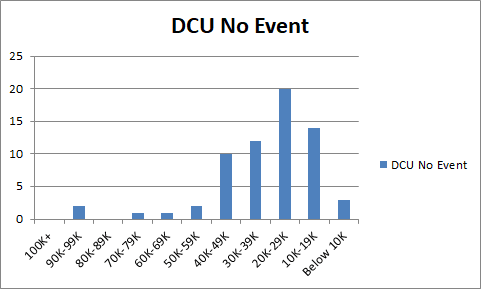
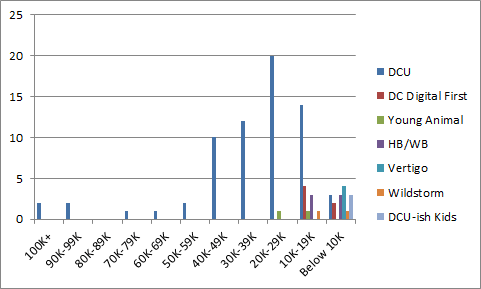
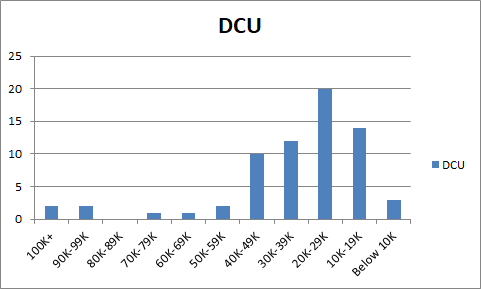
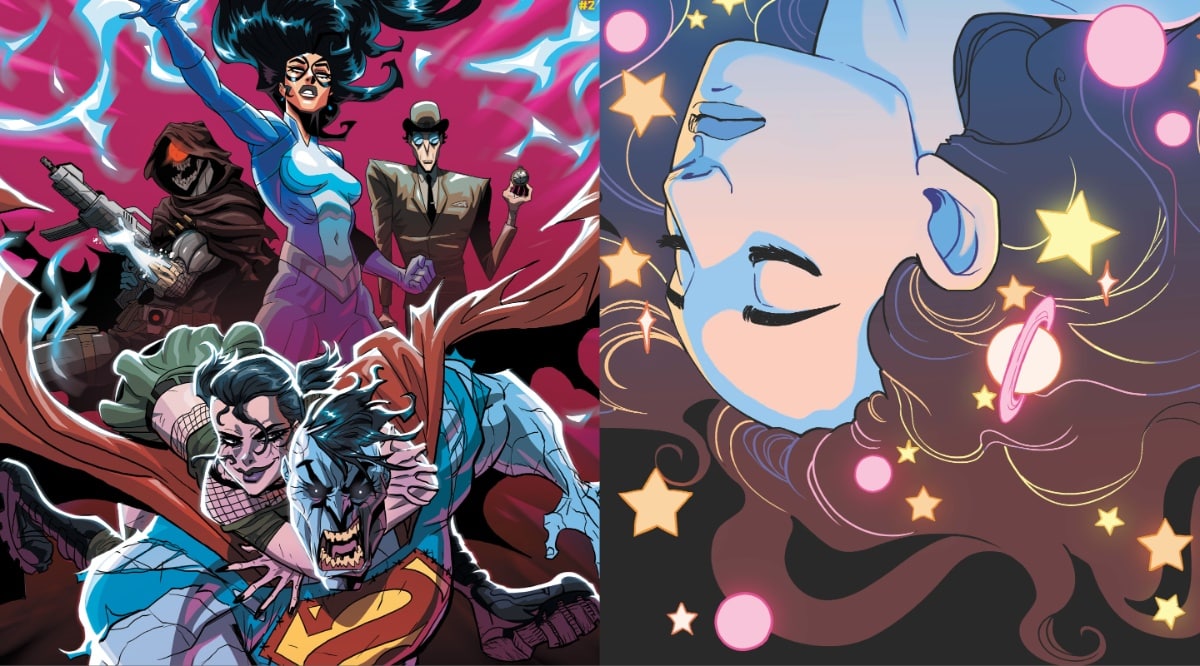
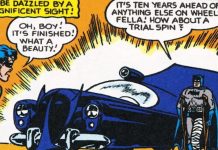
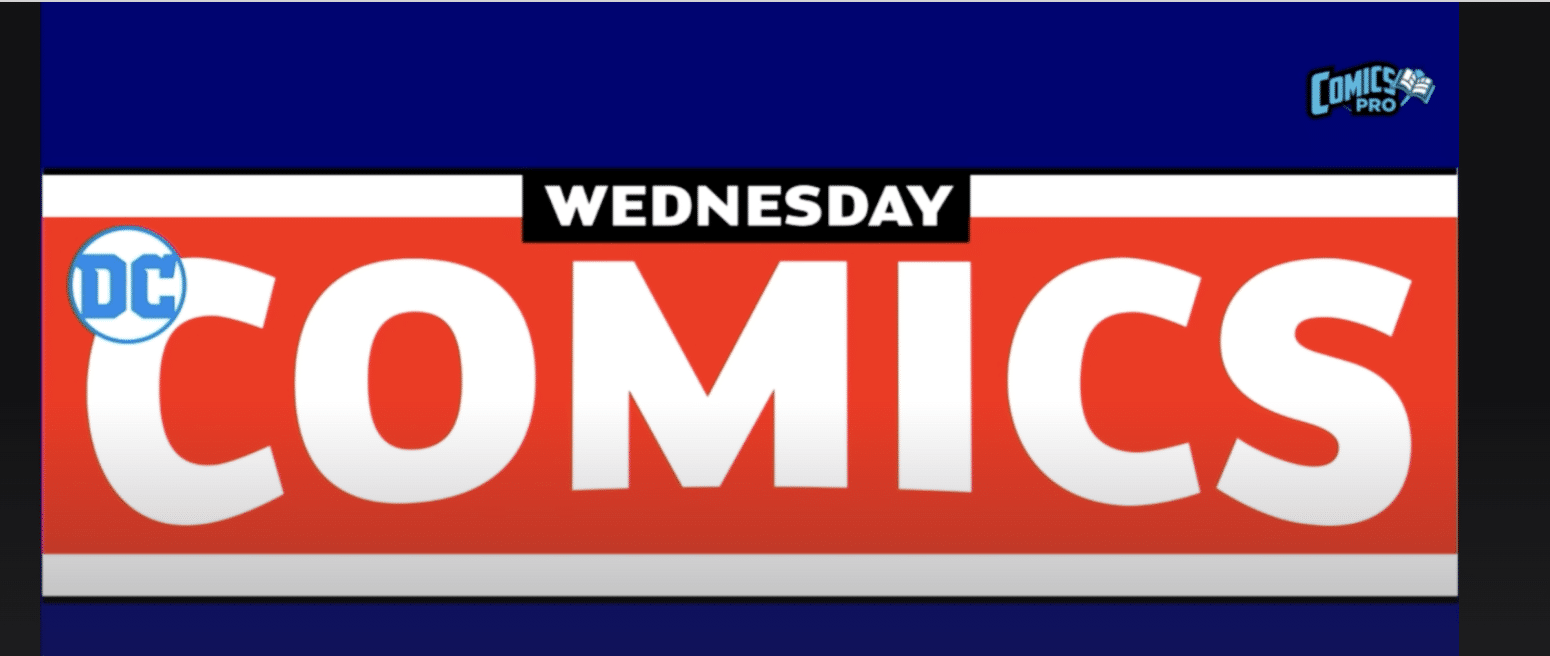


Todd, how would the NEW AGE books “pulling anywhere near METAL numbers” with only one cover?
Todd, I always find your analysis of these sales figures fascinating reading, but is it relevant to put too much emphasis on ‘No Event’ sales figures?
Would it be healthier for DC or Marvel to have its’ mid-list titles performing better? Of course. But for the past 30 years or so, event titles are part of both publishers regular mix of titles. And at the end of the day, line-wide total sales figures are what keeps the big two in the black.
I find it akin to television with its’ ‘sweep’ months. February, May, July and November ratings are what the networks use to base their ad rates on for the months that follow. But you won’t see regular, ‘non-event’ programming scheduled for those months. Instead, many series are preempted for all sorts of specials, events and heavily promoted series debuts and finales — all in the effort to kick up total ratings as high as possible. And that’s how you end up with only four months positioning a network’s profits for an entire year. Fair? Perhaps not. But that’s how TV has been run since the 1950s.
Why is it that concerning if comics calculate their total sales in a similar manner?
All the new Age titles released so far look like Bloodlines left over character designs. The Early Image super Hero characters are tons more inspired. Im all for new characters but come on these all look like created back in the 90’s and where never used back then and DC just dusted them off
Charlie – The no event thing is a bit more of a Marvel thing because of how they often game the system, however I don’t think it’s actually possible to over emphasize the difference between the events and the sustainable sales. What we’re seeing in the market right now is Marvel suffering when their stunts fail and the sustainable publishing program is lacking. Shops have closed, more shops are worried. When the industry relies on stunts and events to break even, everyone’s gambling that the next event performs. If it doesn’t, people are potentially out of work. Imagine what the market would look like right now if readers refused to buy Doomsday Clock and Metal. A metric ton of 20K selling titles can be made to work for publishers, but for point of sale, that works for Amazon a lot better than an independent retailer.
Comments are closed.